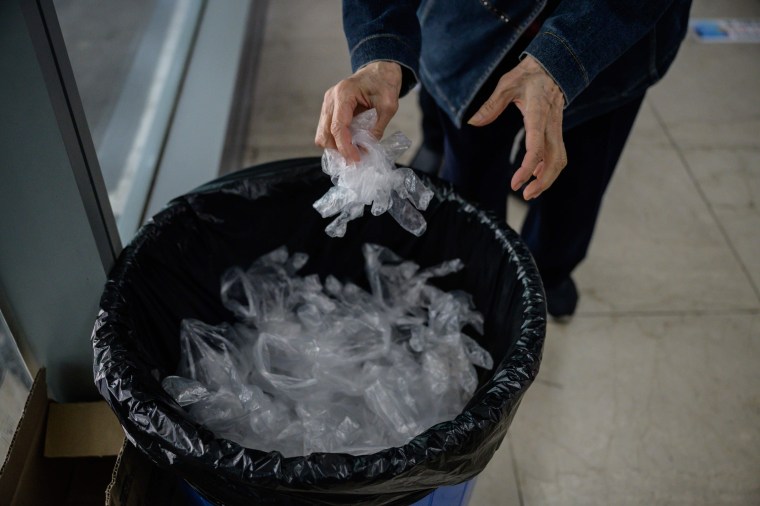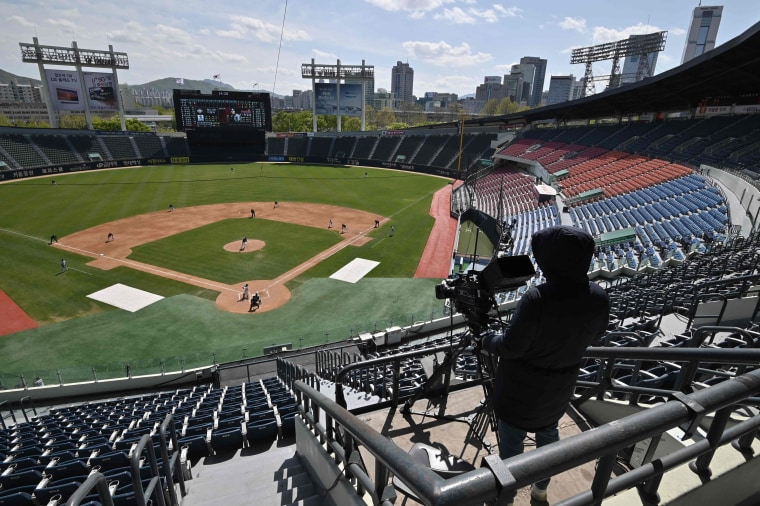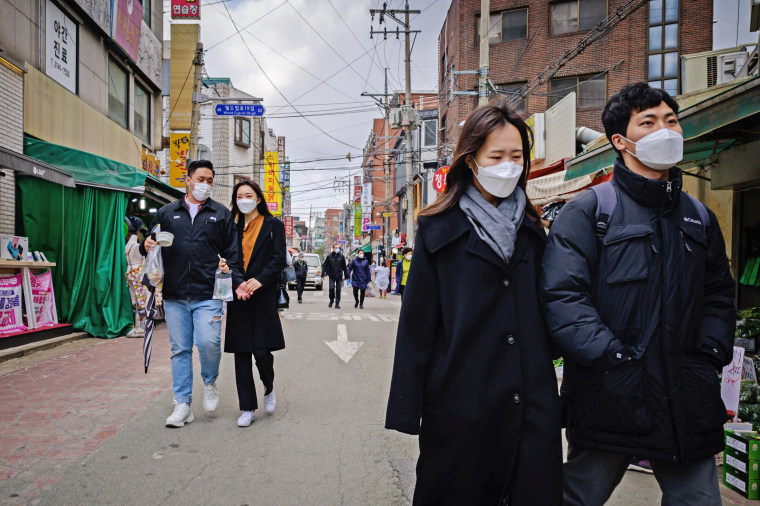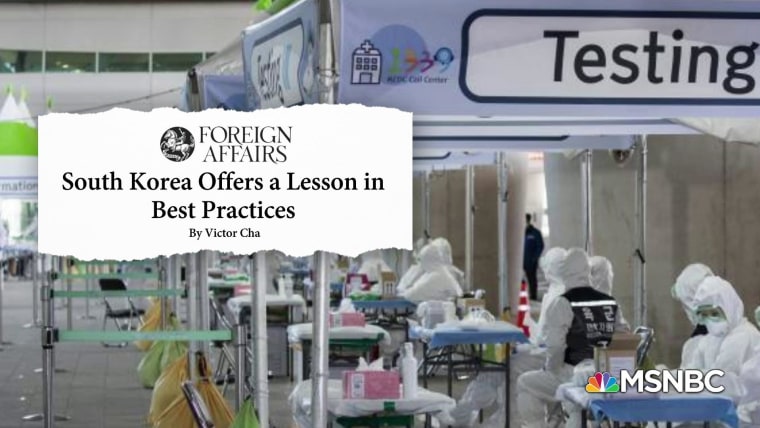South Korea beating coronavirus but anxiety grows over ‘new normal’
SEOUL, South Korea — At a polling station in Seoul’s Seongdong district, masked voters stood three feet apart in single file as they waited to cast ballots in South Korea’s parliamentary election.
But before they voted, voters pumped dollops of sanitizer onto their hands and had their temperatures checked. When they finally reached the end of the line, they received a pair of disposable gloves.
Occasionally, volunteers made announcements such as, “Please maintain your personal space.” But for the most part, voters kept each other in check and walked out within five minutes.
Many countries have postponed elections as a result of the COVID-19 epidemic, but South Korea has proved its resilience by not only flattening its curve of coronavirus infections, but also voting in parliamentary elections on April 15 in record numbers. The turnout was 66.2 percent — the highest in 28 years.
South Korea’s success has been lauded the world over.

But for the people whose lives have been turned upside down by the school and business closings, anxiety remains about the “new normal” of life in a post-coronavirus society, a middle ground the government has dubbed “everyday quarantine.”
The price of this success has been the need to adopt a new way of life. Hygiene rules at the 14,330 disinfected polling stations across the country had already become habitual to voters, including 57-year-old Seo Sun-Jae.
“Washing hands and sanitizing door knobs has become routine for every family now,” said Seo, a housewife who voted at the Samseon-dong community center. “There isn’t anything strange about it anymore. It’s as normal as putting on shoes and socks in the morning.”
Social distancing to “everyday distancing”
As of April 25, health officials had reported no new cases related to the elections. Daily coronavirus cases in South Korea had hovered below 30 for more than two weeks. But on Sunday, April 19, the Korea Centers for Disease Control and Prevention reported only eight new cases — the first single-digit increase in two months. And five days later, the number dropped number dropped even lower.
The nation let out a collective sigh of relief on April 10 when Daegu, the city once at the epicenter of the country’s outbreak, reported zero coronavirus cases for the first time in 52 days.
What the United States can learn from South Korea’s virus response
APRIL 15, 202003:40
If it weren’t for the ubiquitous masks, the streets of South Korea would look almost as they did pre-coronavirus. People are again frequenting restaurants, which often have waiting lists as customers return to their pre-virus work routines.
The country’s success is no accident. As demonstrated in the last few months by its system of early testing and tracking, South Korea seized the chance to prepare for its next course of action while its citizens adhered patiently to social distancing recommendations.
Early this month, a new committee of government officials, medical experts and scholars started drafting guidelines for communal safeguards as society entered the “new normal.”
“We are creating a new set of standards and culture,” Vice Health Minister Kim Gang-lip said at a briefing. “Moving forward, we will inevitably have to change the way we meet others, work and study together and even interact with our own family members.”
Professor Chang Duk-Jin said a new online forum would allow the public to submit questions and suggestions — a continuation of the government’s policy throughout the crisis of operating with full transparency.
“Rather than enforcing a lockdown, we will share detailed updates with the public, hoping this will motivate them to make their own informed decisions,” said Chang, who teaches economic sociology at Seoul National University. “Until the coronavirus subsides in other countries, we must assume it still exists here.”
Chang said the committee divided its recommendations into those intended for individuals, those for companies, and those for the government. If an individual is sick, for example, he or she is advised to rest for at least three days. The employer should then make accommodations, while taking advantage of incentives from the government.
Not-so-new normal
Employees like Shin Min-Hye say the “new normal” doesn’t feel all that new.
“I think the concept of working from home felt newer,” said Shin, 34, who works at a humanitarian aid organization. “But now it feels like we’re just returning to our lives. If anything, I’m relieved.”
Shin described herself as a “slave to Messenger” while working from home, referring to a texting program. If she didn’t give her boss an instant response, she feared being perceived as lazy or distracted. On some days, she worked beyond dinnertime, “because there was no distinction between work and life.”

Since returning to work at the end of March, small adjustments have been made to her working life. Her 9-to-6 schedule has changed to 10-to-5 to avoid rush hour on the subway; there’s no more congregating during the lunch break; the meetings are smaller now, too.
Hospitals have seen a slowing of the flow of new patients, according to Dr. Jung In-Ha, who treats coronavirus patients at a university hospital in northern Seoul.
“Excluding coronavirus patients or severe cases, not many people visit hospitals nowadays,” Jung said. “Though daily cases have decreased significantly, we’re now dealing with a new problem of smaller, local clinics that are struggling to stay open.”
While people reassure each other that the nation has passed through the worst of the crisis, things haven’t progressed much for South Korea’s more socioeconomically vulnerable groups.
On April 8, Seoul Mayor Park Won-Soon temporarily closed more than 400 bars and clubs, including many drab entertainment establishments like karaoke lounges and room salons. The government has recently started lifting these orders, but the toll it has taken on employees is expected to linger for some time.
Some people cannot take advantage of government help at all. One such person campaigns under the pseudonym Lee So-Hee, a woman who describes herself as a “sex seller,” and asked that her real name not be reported. She is well-known as a blogger and campaigns for the rights of sex workers.
“Despite coronavirus, there is no proof of the monetary damages I experienced, nor are there policies to support my current unemployment status,” said Lee, who is in her mid-20s.

Lee So-Hee saved up enough money to take a break from work to study for the TOEIC exam.
When she and her co-workers requested time off as the virus peaked in late February, her boss claimed they had an “illness anxiety disorder,” eventually threatening to ban them from returning to work.
“I don’t think shutting down these businesses was ideal, but it was the right decision,” Lee said. “The government permitting nightlife workers to operate in the midst of a national pandemic would be a more concerning violation of human labor rights.”
The government has since extended its social distancing campaign to May 5. Though it has eased restrictions for venues like churches and arts performances, the general distancing guidelines will remain in place for the foreseeable future.
Lingering anxiety
Jung expressed unease about the medical industry’s potential shift toward telemedicine as a result of mass testing and distribution of results via text. She said forgoing check-ups and diagnosing patients by glancing at pictures could be dangerous.
The shift from in-person to online has also affected the lives of students. Usually, April marks the beginning of an intense period of preparation for midterm exams, which are administered in May. But this year students are peering into computer screens at home.
“I just sit at my desk watching pre-recorded videos over and over again,” said Kim Hyun-Min, a second-year high school student living in Daegu. “We participate by leaving comments on the videos, but it feels more like a chore.”
Online classes began April 16 for Kim, who also started attending hagwon, or cram school, on the weekends.
“Life does feel more normal, but we’re in a limbo — things are neither this nor that,” he said. “We’re just waiting and preparing for an exam that may not even happen.”


